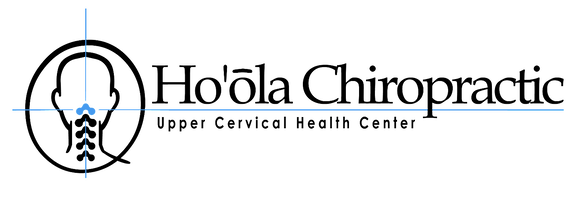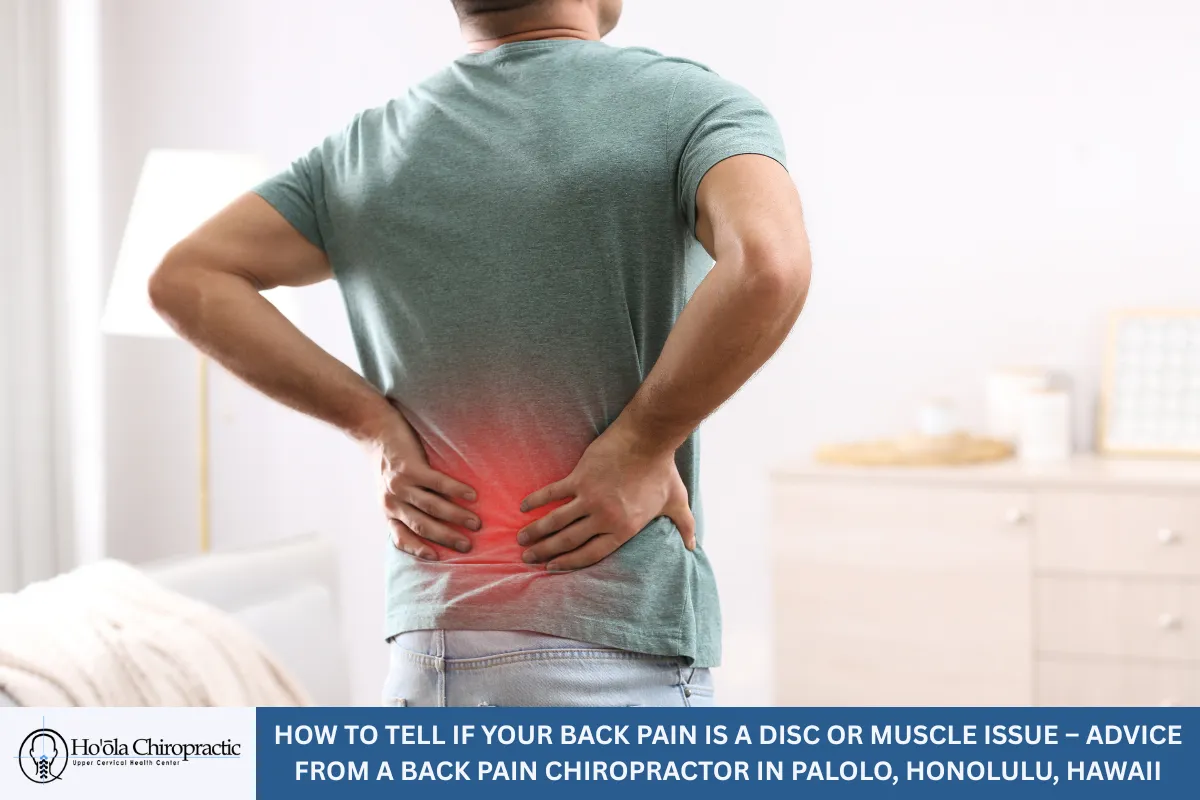A back pain chiropractor often sees patients in Palolo, Honolulu, Hawaii, who are unsure whether their discomfort stems from a pulled muscle or a deeper disc problem. The confusion is understandable because the symptoms can overlap, and both conditions can limit movement, disrupt sleep, and affect daily life. However, knowing the difference between muscle-related pain and disc-related issues is critical in finding relief and choosing the proper treatment approach.
In this comprehensive guide, we’ll explain how to differentiate between these two common causes of back pain. We’ll go over how each condition feels, what causes them, and how professional chiropractic care can help with recovery.
Understanding Muscle Strains in the Back
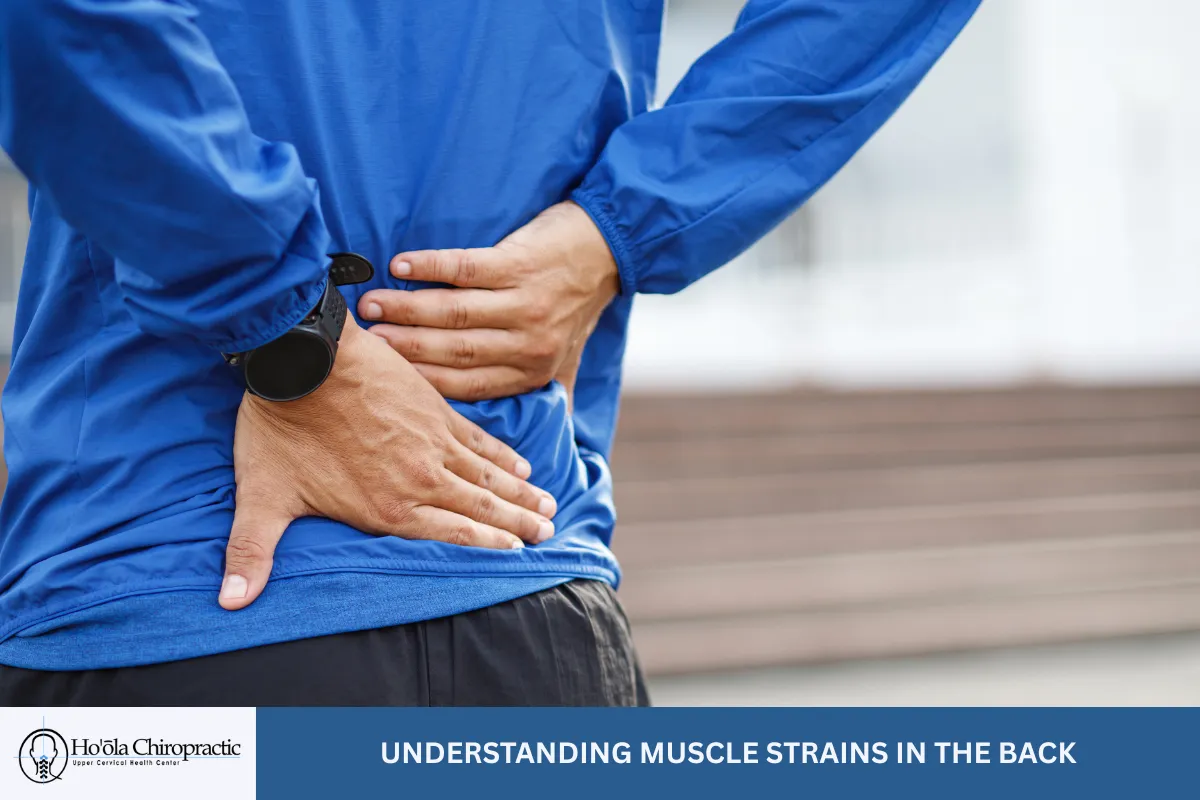
A muscle strain in the back happens when a muscle or tendon is overstretched or torn. This typically occurs from activities like lifting something heavy without support, sudden twisting movements, or even just poor posture over time.
Signs You Might Be Dealing with a Muscle Strain
Muscle-related back pain often presents as a dull or aching sensation that stays in one area. You may feel tightness or spasms, especially after physical activity. The affected spot might feel sore to the touch, and any movement can make the discomfort worse.
What makes muscle pain stand out is that it usually doesn’t travel down your legs or into other parts of your body. It’s mostly localized and responds well to rest, ice packs, and gentle stretching. While the pain can be intense, especially during the first few days, most muscle strains tend to improve with time and conservative care.
Common Causes of Muscle Strain in Palolo
In a place like Palolo, where residents often balance work, family, and active lifestyles, several things can trigger muscle strains:
- Improper lifting during yard work or household tasks
- Overexertion during weekend hiking or recreational sports
- Long periods of sitting at a desk or working in the garden with poor posture
- Skipping warm-up routines before physical activity
The key is to recognize early signs and take proper action before the strain worsens or leads to recurring issues.
What Is a Disc Issue and How Does It Affect the Spine
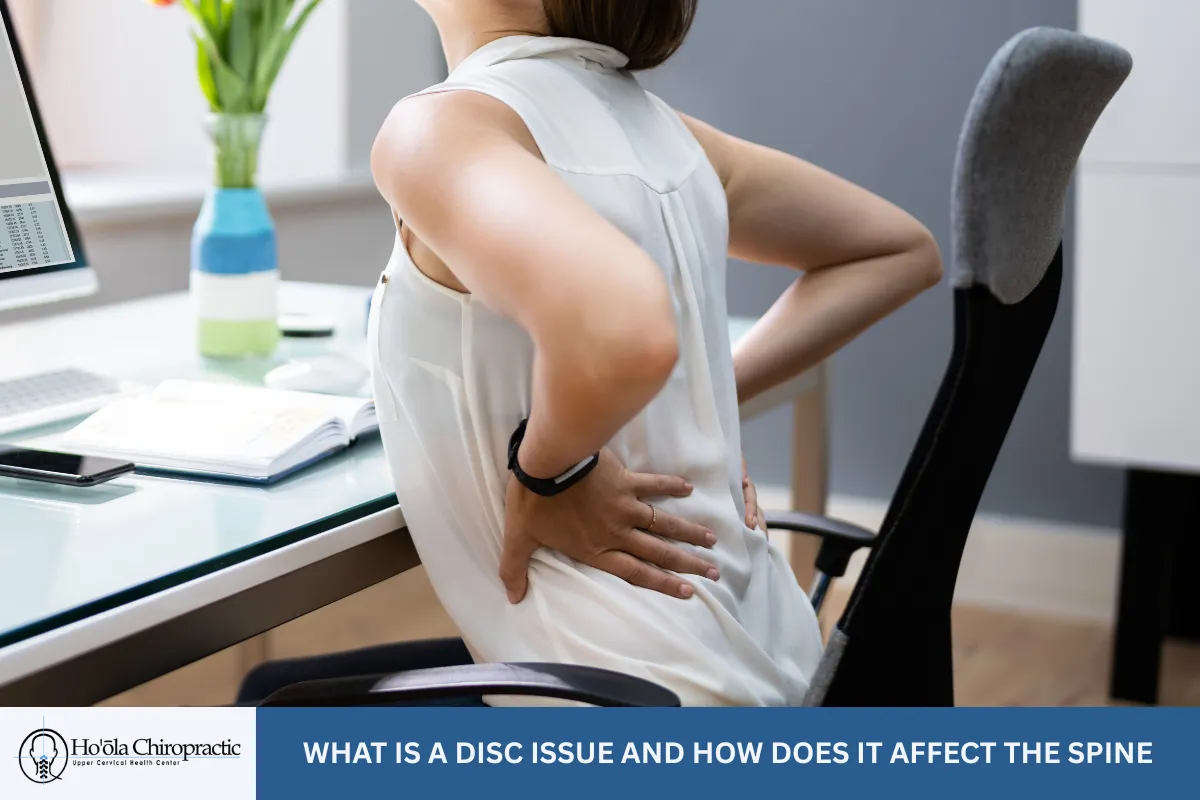
The spinal discs sit between the vertebrae in your spine, acting as shock absorbers. Each disc has a soft center (nucleus) surrounded by a tougher outer layer (annulus). A disc issue occurs when the inner part pushes through the outer shell, often pressing on nearby nerves. This condition is commonly known as a herniated or bulging disc.
How Disc Pain Feels and Behaves
Disc-related back pain is often more intense than muscle pain. It can cause a burning, stabbing, or electric-like sensation. Unlike muscle strain, disc problems often involve radiating pain, meaning the discomfort travels to other parts of the body—usually the legs, hips, or buttocks. This is especially true if the disc is pressing on a nerve root.
You may also notice numbness, tingling, or weakness in the lower limbs. Activities like bending, sitting, or coughing can make the pain worse. These symptoms can persist for weeks or even months without proper treatment.
What Can Cause Disc Problems?
In Palolo, common contributors to disc issues include:
- Repeated bending or twisting movements
- Degenerative disc disease due to aging
- Long-term poor posture
- Sudden injury from a fall or accident
- Excess body weight increases pressure on the spine
Disc problems are more complex than muscle injuries and often require focused care to address the root cause of the issue, especially when nerve involvement is present.
How to Tell the Difference Between Muscle and Disc Pain
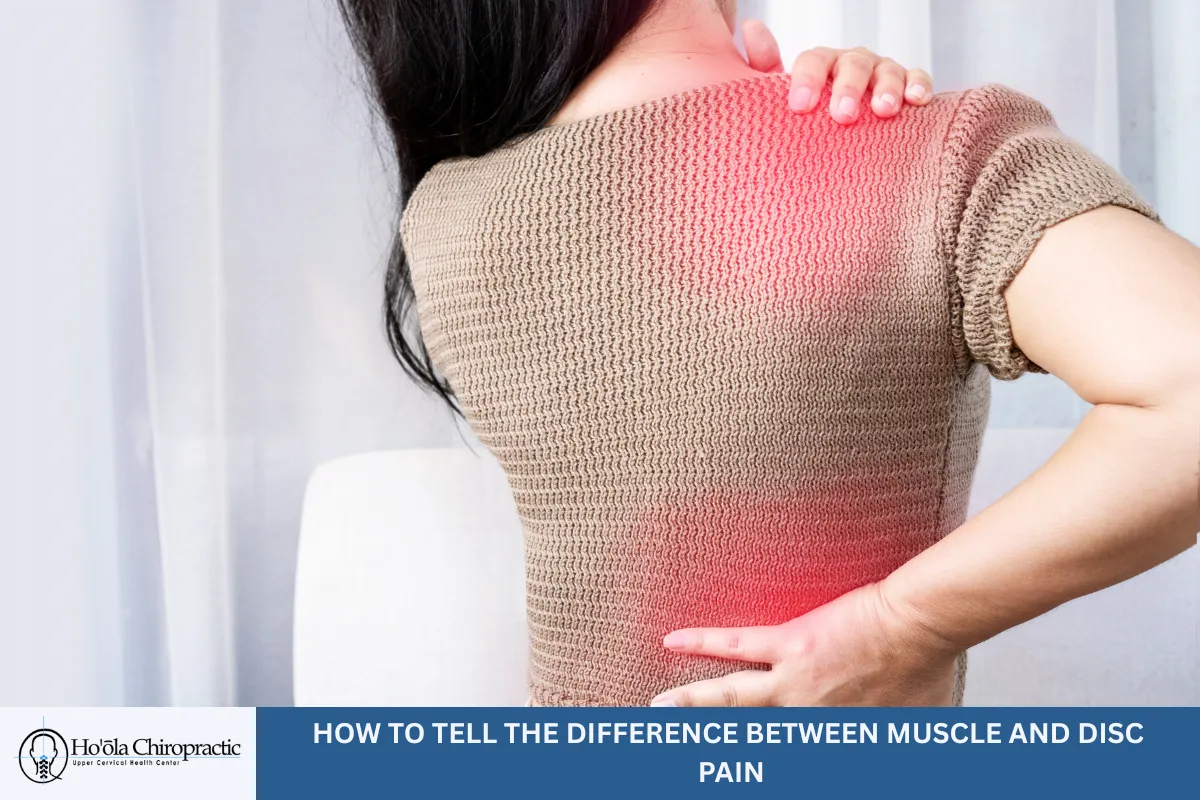
Though both muscle and disc issues affect the back, there are clear ways to distinguish between them. Here's a breakdown to help you understand the differences more clearly:
Location of Pain
- Muscle strain: Localized to one area of the back
- Disc issue: May begin in the lower back and radiate down the legs
Type of Sensation
- Muscle strain: Achy, sore, tight, or throbbing
- Disc issue: Sharp, burning, or shooting pains; sometimes feels like an electric shock
Movement Impact
- Muscle strain: Pain gets worse with specific movements or lifting
- Disc issue: Pain may intensify while sitting or when sneezing, coughing, or straining
Additional Symptoms
- Muscle strain: May include swelling or bruising in the area
- Disc issue: Numbness, tingling, or weakness in legs or feet
Recovery Time
- Muscle strain: Improves in a few days to a couple of weeks with rest
- Disc issue: May take several weeks or months to heal and may require structured therapy
While these signs can help guide your understanding, a professional assessment is still the best way to confirm the cause of your back pain.
How a Chiropractor Can Help Identify the Root Cause
A back pain chiropractor in Palolo doesn’t guess—they assess. Chiropractors use specific tests and observations to determine whether your back pain is muscular, disc-related, or caused by another issue.
What to Expect During an Evaluation
- Health History Review: You’ll discuss how the pain started, what makes it better or worse, and your medical background.
- Physical Examination: This includes checking your posture, spine alignment, reflexes, and muscle strength.
- Mobility Testing: Your chiropractor may observe how you move or perform simple motions to assess your back's response.
- Neurological Checks: To identify if a nerve is being compressed or irritated.
- Referrals for Imaging: If needed, chiropractors can recommend an X-ray or MRI to get a better view of the internal condition.
This thorough evaluation helps determine the best plan for your recovery—whether your pain is muscle-based, disc-related, or both.
Treatment Options Offered by Chiropractors in Palolo
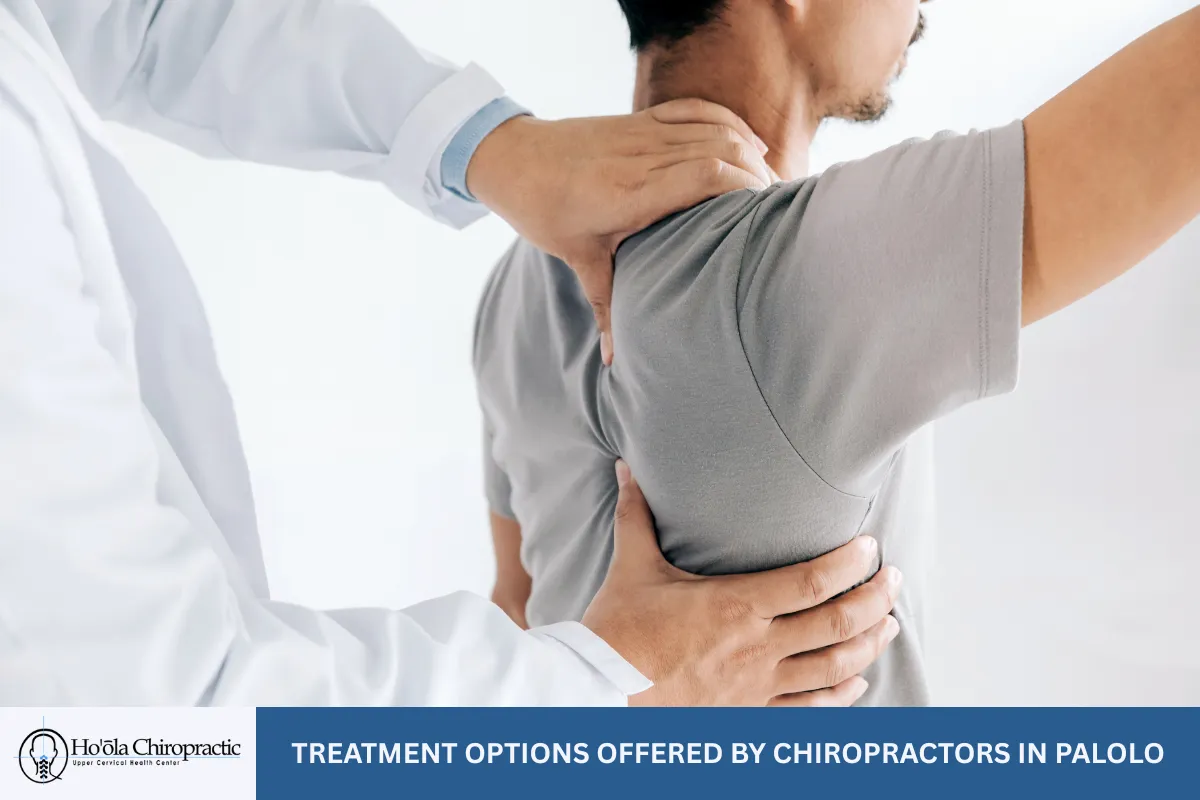
Once the chiropractor identifies the root cause of your pain, the next step is crafting a personalized treatment plan. Chiropractic care doesn’t rely on drugs or surgery. Instead, it focuses on encouraging the body to heal naturally by removing stress from the nervous system and spine.
Chiropractic Care for Muscle Strain
For muscular pain, treatment may include:
- Spinal adjustments: Restore proper alignment and reduce stress on the back muscles
- Soft tissue therapy: Relieves muscle tightness and improves circulation
- Stretching techniques: Target stiff areas and promote better flexibility
- At-home exercises: Simple movements that strengthen weak muscles and prevent further strain
With consistent care, many people experience faster healing, less stiffness, and better mobility.
Chiropractic Care for Disc Issues
When treating disc-related problems, chiropractors take a gentler, more structured approach:
- Spinal decompression therapy: Helps relieve pressure from bulging discs by gently stretching the spine
- Flexion-distraction techniques: Improve spinal movement and reduce nerve compression
- Postural correction: Retrains the body to maintain healthier alignment during everyday activities
- Lifestyle guidance: Tips on sitting, sleeping, and working in ways that support spinal health
By working with the body, chiropractic care offers lasting relief and helps reduce the risk of future disc flare-ups.
How to Care for Your Back at Home

Whether you’re dealing with a mild strain or something more serious, how you treat your back at home matters. Supporting your recovery involves small daily habits that can make a big difference.
Tips for Supporting Muscle Recovery
- Rest, but don’t stay immobile for too long
- Apply cold packs for swelling in the first 48 hours, then switch to heat
- Stretch gently and avoid pushing through pain
- Sleep with a pillow under your knees if lying on your back
Tips for Managing Disc Pain
- Use a supportive chair with lumbar support
- Take regular breaks from sitting or standing
- Avoid bending or twisting motions
- Try sleeping on your side with a pillow between your knees
Taking care of your back is an ongoing process, not just something you do when pain strikes.
What Happens If You Ignore the Pain?
Ignoring back pain can lead to more serious issues. Muscle pain may seem minor, but if you keep overusing the area without giving it time to heal, it can lead to chronic tension or recurring injuries.
Disc problems, if left untreated, may worsen and create long-term nerve damage, muscle weakness, or even mobility issues. Seeking help from a back pain chiropractor early increases your chances of a smooth and full recovery.
Final Thoughts on Managing Back Pain the Right Way
Back pain affects people of all ages and walks of life, and identifying whether it stems from a muscle strain or a disc problem is crucial to choosing the right treatment. While muscle injuries are more common and tend to heal quickly, disc-related issues often linger and can be more serious if not properly treated.
By understanding the signs, listening to your body, and consulting a qualified chiropractor, you can take the right steps toward long-term comfort and better spinal health. The road to recovery doesn’t have to be confusing or overwhelming—especially with the right support along the way.
Palolo Back Pain Chiropractor – Ho'ola Chiropractic
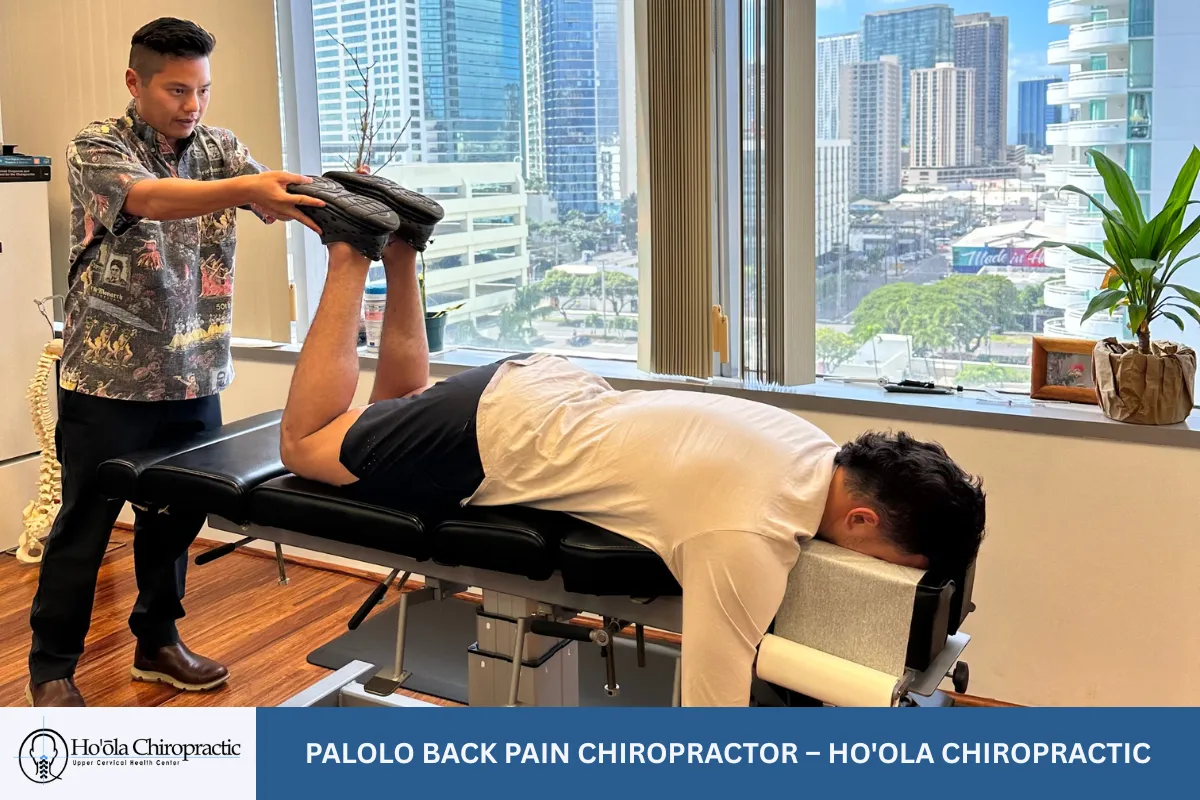
Looking for real relief from stubborn back pain? At Ho'ola Chiropractic in Palolo, we help people just like you recover from discomfort caused by muscle strain, disc problems, and other spine-related issues. Our care is gentle, hands-on, and tailored to your specific needs so your body can move and feel better naturally—without relying on medications or invasive procedures.
We are committed to offering solutions that work. Whether you’re dealing with back pain, migraines, vertigo, neck stiffness, or muscle tightness, our goal is to get to the root of the problem and help your body heal from the inside out. Led by Dr. Luke, our clinic provides a calm and welcoming space where your health always comes first. We focus on removing nerve interference so your body can function the way it’s supposed to—strong, pain-free, and balanced.
Call us today at (808) 772-8284 to schedule a visit and take the first step toward lasting relief.
Frequently Asked Questions About Back Pain and Chiropractic Care
1. What causes persistent back pain, and how can it be managed?
Persistent pain in the back can result from various factors. Common causes include herniated discs, spinal misalignment, spinal stenosis, and degenerative disc disease. These conditions affect the spinal cord and spinal nerve, leading to discomfort that may worsen over time.
Effective pain management often requires a combination of:
- Chiropractic treatment, such as spinal manipulation or manual therapies
- Physical therapy to build strength and flexibility
- Soft tissue therapy for reducing muscle spasms
- Rehabilitation exercises to support recovery
In some cases, untreated back pain may lead to more serious problems like nerve damage or cauda equina syndrome, which require urgent medical care. Targeting the root cause is crucial. Whether the issue is related to a pinched nerve, low back pain, or sciatic nerve irritation, a tailored care plan involving chiropractic care and rehabilitation can significantly improve long-term comfort and function.
2. What is the difference between a herniated disc and degenerative disc disease?
While both affect the discs in the lumbar spine or cervical spine, herniated discs and degenerative disc disease are different conditions.
A herniated disc occurs when the inner gel-like core (called the nucleus pulposus) pushes through the outer layer, often compressing nearby spinal nerves.
Symptoms may include:
- Sharp or shooting spinal pain
- Numbness or tingling in the limbs
- Muscle weakness or spasms
- Sciatic nerve irritation
Degenerative disc disease, on the other hand, is an age-related breakdown of the spinal discs. It causes chronic lower back pain, stiffness, and reduced flexibility. This condition may also lead to disc herniation, spinal stenosis, or spinal misalignment over time.
Treatment for both may include:
- Manual manipulation and chiropractic care
- Physical stress reduction through lifestyle changes
- Pain management with non-invasive therapies
Addressing both conditions early can prevent complications and maintain spinal health.
3. How can chiropractic care help with sciatic nerve and spinal pain?
Chiropractic care is a non-invasive approach focused on diagnosing and treating disorders of the spinal cord, spinal nerves, and musculoskeletal system. When dealing with sciatic nerve pain, or sciatica, chiropractors often target the lumbar spine, where pressure on the nerve usually begins.
Benefits of chiropractic treatment for sciatica and spinal pain include:
- Spinal manipulation to improve alignment and reduce nerve pressure
- Manual therapies to loosen tight muscles and relieve muscle spasms
- Soft tissue therapy to address inflammation and scar tissue
- Rehabilitation exercises to support the spine and prevent recurrence
By correcting spinal misalignment, chiropractors relieve compression on the pinched nerve, promoting better movement and less discomfort. These techniques can also help with disc herniation, degenerative disc conditions, and low back pain without medication or surgery.
A holistic treatment plan combines chiropractic adjustments with education and lifestyle changes to restore function and relieve pain naturally.
4. Can spinal manipulation treat spinal stenosis or cauda equina syndrome?
Spinal stenosis is a condition where the spinal canal narrows, compressing the spinal cord or spinal nerve roots. In contrast, cauda equina syndrome is a rare but serious emergency involving compression of the cauda equina (a bundle of nerves in the lower spine), which can cause:
- Severe low back pain
- Loss of bladder or bowel control
- Weakness in the legs
- Numbness in the saddle region
While chiropractic care may help with spinal stenosis by easing tension and improving movement, cauda equina syndrome requires immediate surgical intervention. Chiropractors do not treat this condition, but can help identify symptoms and refer patients quickly.
For manageable cases of spinal stenosis, chiropractic approaches may involve:
- Gentle manual manipulation to reduce nerve pressure
- Targeted rehabilitation exercises
- Pain management through non-invasive treatments
- Postural correction to relieve physical stress on the spine
Always seek evaluation from a qualified professional to ensure the correct diagnosis before beginning treatment.
5. What role does the sacroiliac joint play in lower back pain?
The sacroiliac joint (SI joint) connects the base of the spine (sacrum) to the pelvis. It plays a key role in distributing weight and absorbing shock between the upper body and legs. Dysfunction in this joint can cause low back pain that may be mistaken for a pinched nerve or lumbar spine issue.
SI joint pain may feel like:
- Aching in the lower back or buttocks
- Pain that worsens with standing, walking, or climbing stairs
- Stiffness in the hips
- Radiating pain that mimics sciatic nerve discomfort
Treatment often includes:
- Chiropractic care with gentle manual manipulation of the joint
- Soft tissue therapy for muscle balance
- Stabilization exercises to support the joint
- Modifying activities that add physical stress to the area
Because the SI joint is often overlooked, a thorough exam is crucial. Addressing it early can prevent further spinal misalignment and improve mobility.
Read more: How Often Should You Get a Spine Adjustment in Honolulu, Hawaii?
